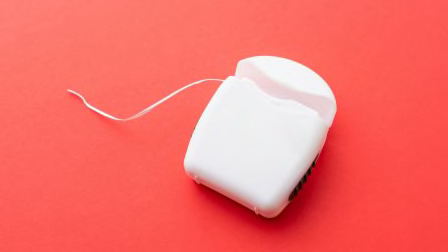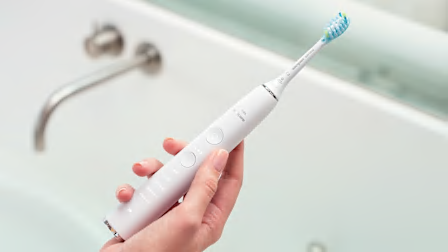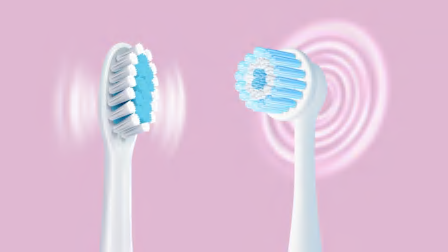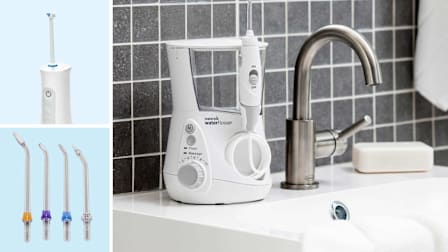2 Kids Toothpastes Experts Love—and Why
We evaluated 10 children’s toothpastes to find safer, more sustainable options, and provide advice on brushing
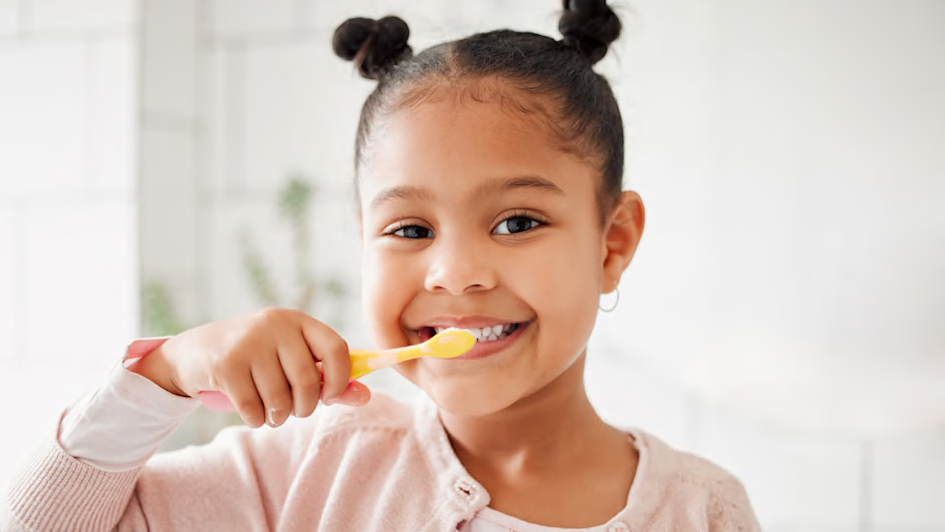
As soon as your baby’s first teeth come in—which can start as early as 6 months—you’ll want to get started with toothbrushing, according to the American Dental Association. Children under 3 should have their teeth cleaned twice a day with a soft-bristled toothbrush and a rice-grain-sized dab of kids toothpaste.
What’s important to have in that toothpaste? Should it include fluoride, as is recommended for adults? And what about all those chemicals in the ingredients list—do any of them raise concerns, either for your child’s health or for the environment?
To answer these and other questions, Consumer Reports partnered with Made Safe, a nonprofit organization that screens products for safety and sustainability, to evaluate the ingredients in 10 children’s toothpastes, and we consulted with pediatric dental experts and reviewed the most recent advice from the ADA.
Here’s what we learned.
What to Look for in Kids Toothpaste
Fluoride: According to the ADA, fluoride should be in all toothpaste, even those for children. Just a smear the size of a grain of rice can help prevent cavities and is safe, says Mirissa Price, DDS, a pediatric dentist and consumer adviser for the ADA. All the products we like best have that key ingredient.
No hidden ingredients: In addition, kids toothpaste often comes flavored, though the ingredients used to make the flavors are trade secrets and companies don’t have to—and often don’t—disclose them. Our favorite toothpastes come from companies that list the ingredients used to make their flavors on their labels or websites or are at least willing to tell us what those ingredients are. For example, Hello told us it uses orange oil in its Kids Magical Mermaid Fluoride Toothpaste and Tom’s of Maine’s website says its Kid’s Anticavity Natural Silly Strawberry toothpaste gets its flavor from strawberry and other juices. Burt’s Bees, Colgate, and Crest, on the other hand, didn’t respond to our questions about what they use in their flavors.
Child-safe and planet-safe ingredients: Finally, we looked for products without ingredients that raise safety concerns, either for health reasons or because they might harm the environment in one way or another. That includes things like titanium dioxide and Blue Dye No. 1, both of which are added as colorants to many products. Some research has linked certain dyes to hyperactivity in children and titanium dioxide to potential damage to the body’s genetic material and immune system. The European Union has banned titanium dioxide in food, and here in the U.S., California and Pennsylvania are considering taking similar steps against several food dyes.
Keeping risks in perspective: If your child is already using a kids toothpaste that didn’t make our experts’ safe list, don’t panic. The experts we spoke to stressed that none of the ingredients they flagged pose immediate health risks to children. That said, we feel that parents should be aware when certain ingredients are suspected (or known) to have a negative environmental effect or may present potential harm over time with repeated exposure. We also know that cost and availability are important considerations for families—it’s worth noting, for example, that Hello’s toothpaste costs roughly twice as much per ounce as Colgate’s or Crest’s. So we encourage you to use this report as a guide, balancing effectiveness, possible risks, and cost as you choose the right product for your family.
When you shop through retailer links on our site, we may earn affiliate commissions. 100% of the fees we collect are used to support our nonprofit mission. Learn more.
Tips on Finding Safer Kids Toothpaste
Try one of our top picks from our review above. You can also shop better by following our tips below. And note that there’s no need to stick to toothpaste specifically labeled for kids, Price says. Children can use adult toothpaste as long as it contains fluoride and doesn’t address oral health concerns beyond cavity prevention, such as gum disease or teeth whitening.
Be cautious of titanium dioxide. This ingredient is mainly used in toothpaste to make it appear whiter and brighter. While more research is needed on how much titanium dioxide is consumed from brushing our teeth, the ingredient has been banned in foods in the European Union because of the possibility that it could damage the body’s genetic material and undermine its immune system. In the U.S., CR supports a bill in California that would ban titanium dioxide from foods served in the state’s public schools. Numerous public health interest organizations have petitioned the Food and Drug Administration to ban the ingredient from foods in the U.S.
Be wary of dyes. Not all the dyes used in toothpaste pose risks, though several have raised concerns. For example, Blue Dye No. 1 and some others are linked to hyperactivity in children. You can spot dyes on labels by looking for a color, generally followed by a number and sometimes preceded by FD&C. Examples include: FD&C Blue No. 1, Blue No. 2, Red No. 3, and Yellow No. 6. As with titanium dioxide, six harmful dyes are up for the proposed ban in California public schools because of their link to neurobehavioral problems in some children.
Shop for toothpaste with disclosed flavors. Because it’s impossible to know what you’re exposed to without ingredient disclosure, choose a toothpaste with all its ingredients listed on the packaging. Steer clear of those that use catch-all terms like “flavor,” “artificial flavor,” or even “natural flavor.” This will help you avoid flavor ingredients that have been linked to human and environmental health issues, such as acetamide, which is associated with cancer, and musk ambrette, which may interfere with fertility and cause environmental harm.
Avoid ethoxylated ingredients. These are ingredients that use ethylene oxide, an ingredient linked to cancer when inhaled, in manufacturing. The process also gives rise to a contaminant called 1,4-dioxane, which is linked to cancer. Because both of these ingredients are contaminants, you won’t find them listed on labels, but you can spot ethoxylated ingredients by looking for the terms PEG and polysorbate, typically followed by a number (for example, PEG-8 or polysorbate 20), as well as the suffix “-eth” as in “laureth.”
Toothbrushing How-to for Kids
The keys to brushing for kids? Using the right amount of paste and pressure, brushing the right amount, and adult supervision.
Children under 3 years old should use a dab of paste that’s about the size of a grain of rice, says the ADA’s Price. After that age, a pea-sized amount is sufficient. Adults should watch kids when they brush until they can spit out excess toothpaste themselves. Use a soft or extra-soft bristled brush, with gentle pressure. Finally, brush twice a day, for 2 minutes each session.
@consumerreports In partnership with @MADE SAFE Certified, we evaluated 10 products to find safer, more sustainable options. In this video, Made Safe founder and executive director @NotoxAmy explains. Learn more through the link in our bio. #toothtok #parenttok #parentsoftiktok #toothpaste
♬ original sound - Consumer Reports

















